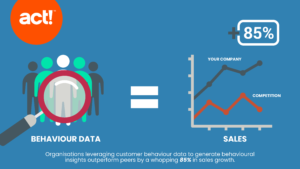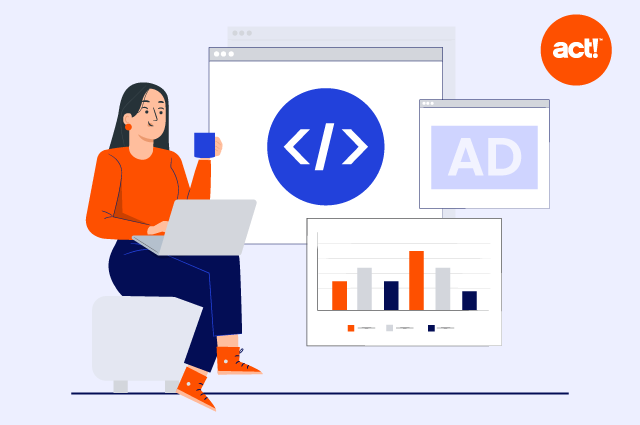User Behaviour Analytics (UBA) refers to the kind of data analytics that provide insights into the actions of prospects and customers when interacting with your business online. Behavioural analytics data gives you a clear picture of how your customers are behaving in relation to your marketing efforts, or on your website. It takes a much deeper look into user behaviour than the basic metrics such as numbers of users, or pages viewed.
Behavioural analytics are commonly used within ecommerce, social media and gaming; however any business that needs to optimise sales and marketing activities can utilise them. They are a fantastic tool for increasing engagement and customer retention, and they help you to offer better value. Consequently you will be in a better position to maximise conversions and revenue indefinitely. Given their power, behavioural analytics should be incorporated into decision-making and business strategies on a daily basis for optimum company growth.
Why use behaviour analytics?
If you are interested in gaining a deep understanding of customers’ pain points and issues, as well as their motivations and probable future actions, behaviour analytics will help. By putting the focus on user behaviour, behavioural analytics helps you to figure out the true impact of your business decisions on customers. Similarly, they can help you to pinpoint opportunities that may otherwise have been missed.
McKinsey research concluded that organisations leveraging customer behaviour data to generate behavioural insights become able to outperform peers by a whopping 85% in sales growth, as well as over 25% in gross margin. This research highlights the power behaviour analytics gives to those who wish to gain a 360-degree view of customers’ challenges and preferences alike.

It assists with the process of refining online features and products based on what customers find the most useful and what they tend to ignore. You can also learn about how they use products and services, and what equates to true value from their perspective.
What is behaviour analytics used for?
User actions (for example, clicks on your website or swipes on an app) are classified as events. Behavioural analytics pinpoints precise actions taken by your customers, organizing this raw event data into timelines that can be viewed as a journey taken by each user. By studying this journey you can more clearly determine user preferences and adjust products and services to suit. Simply put, it is all about personalising your products and services for your customers. Yet to do this, you must find out how your customers are using your products and services.
Let’s take a look at a couple of ways behaviour analytics might be used:
A travel business decides to track customer events on their website so that they can hone their marketing efforts. One customer might have explored visiting a particular destination with a specific airline, but then abandoned the process before purchasing. The company responds to this information by sending an email to the prospect. The email might include a flight discount or offer, or some useful information on the destination of interest in order to inspire a booking.
Another example might look like this: a motor business sends out an email campaign that includes a PDF attachment containing information about a range of cars. Using behavioural analytics they are able to track the user events. They can find out who clicked on the attachment, how long they kept the PDF open for, how far they got through the document and where they spent the most time. The processed data is then sent to the sales team, who are now better placed to open conversations with prospects. Conversations become more interesting to the prospects, and the sales reps can pass on relevant information and targeted offers.
How does behaviour analytics work?
Using aggregated behavioural data (the raw event data created by user actions online) it is possible to determine common behaviours. You can follow the user journey to understand the order events took place, giving you insights into motivations and preferences. The data is fundamental to the analysis, and good behavioural analytics software processes the data in preparation for this analysis.
It offers a visual interface that allows you to segment your users, run reports, and understand everything from your users pain points and preferences to their specific interests and requirements. It is the next level up from analysing basic data such as demographics. Through behavioural analytics, you discover details such as:
- What users click on inside a product page
- How users respond to changes in features
- Where, when and how users become stuck
- The time it takes from initial interaction to conversion
- How well marketing messages are received by users
- Degrees of success with different advertising campaigns
In order to get the best from behavioural analysis, it helps to first decide on what you expect (or want) to happen when users interact with you online. Turning this into an ideal journey (perhaps by creating a customer journey map) gives you something to compare actual user behaviour against. It also provides some direction when it comes to making adjustments.
It makes the customer journey much clearer and enables successful refinement of products, services and marketing strategies. To give you another example of the capability at your disposal, you could use behavioural data to study the actions of users who repeatedly return to your website. You could focus on those who return repeatedly a couple of months after signing up to your mailing list; perhaps these users will have certain behaviours in common. For instance, they might tend to leave blog comments or ask questions in a forum.
Ultimately, you will be using behaviour analytics to figure out exactly what people think of your product or service and how they use it. You can then devise new ways to add more value. In this way you increase both customer retention and revenue, taking your business from strength to strength.






